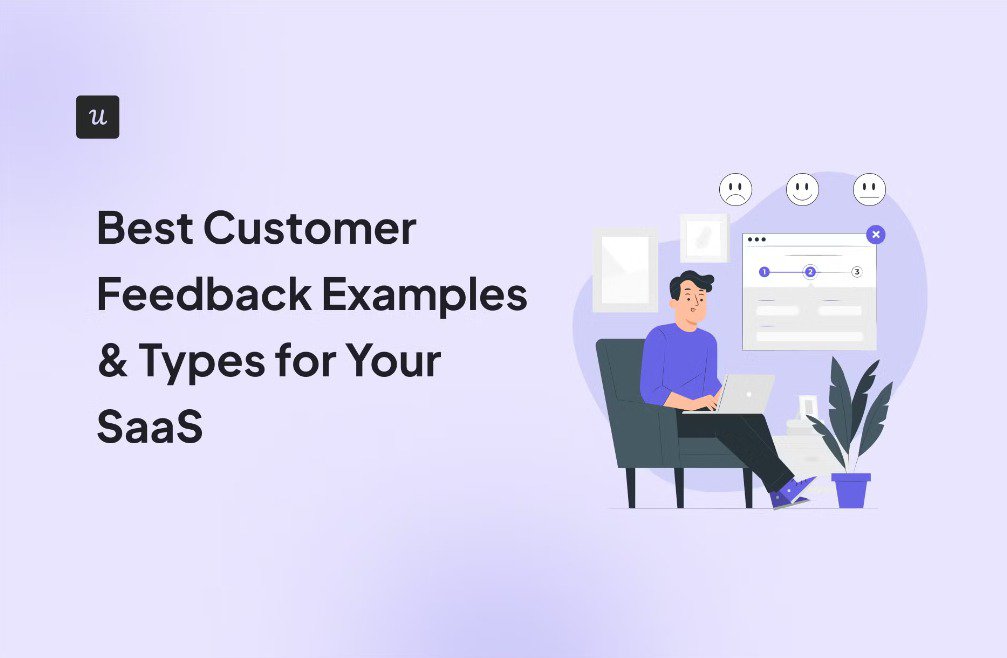
Try Userpilot Now
See Why 1,000+ Teams Choose Userpilot

7 types of customer feedback examples
There are two main categories of user feedback: active and passive. The difference between active vs passive customer feedback is who initiated it — active feedback comes directly from the company, while passive feedback is initiated by users.
For instance, active feedback is often gathered through customer feedback surveys, whereas passive feedback is found on social media or online reviews.
The 7 types of customer feedback we’ll be covering below fall into both categories and include:
- User survey responses.
- Customer scores.
- Online reviews.
- Customer support interactions.
- Customer interviews.
- Social media.
- Feature requests.
What’s your biggest challenge with collecting customer feedback right now?
Which type of customer feedback are you most interested in gathering?
Are you currently using a dedicated tool for collecting customer feedback?
Ready to see powerful customer feedback tools in action?
Let us show you how Userpilot can help you collect, analyze, and act on feedback to build better products. Get a personalized demo today.
1. User survey responses
Responses to user surveys are the most common form of active feedback, but there are different survey types you can use (depending on your goal). Here’s a breakdown of the four types of user surveys most SaaS companies deploy:
- Onboarding survey. Onboarding surveys are used to gather feedback about the onboarding process — either while the user is going through it or right after they finish onboarding. The question itself might be open-ended, multiple-choice, or a Likert/rating scale.
- User experience survey. A user experience survey — or “UX survey” — collects in-app feedback about the product while customers are actively using it. They can be used to validate new features, gather negative feedback related to bugs, and more.
- Customer service survey. Customer service surveys are used for gathering feedback about either the issue their ticket was about and/or the quality of their interaction with your support representative. Addressing these responses can keep at-risk users from churning.
- Product-market fit survey. Finally, a product-market fit survey helps determine if your product is in the right market. The passing score for PMF surveys — aka the “Sean Ellis test” — is over 40% of respondents saying they’d be very disappointed if they could no longer use the product.
Userpilot serves as a customer feedback tool by letting you embed in-app surveys and feedback forms in your product without writing any code:
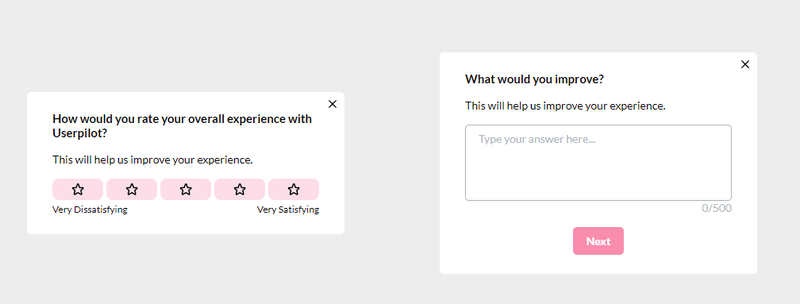
2. Customer scores
In addition to the qualitative feedback you get from user responses to UX, PMF, onboarding, or customer service surveys, you can also extract quantitative customer scores. The three primary survey scores to use for customer satisfaction benchmarking are NPS, CSAT, and CES:
- NPS surveys. Net Promoter Score surveys are used to measure customer loyalty. You drive an NPS survey by asking customers to rate the likelihood of them recommending your product or service to others on a horizontal numeric scale.
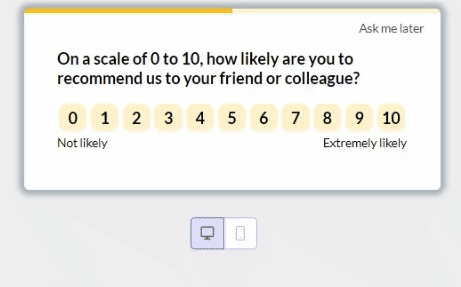
- CSAT surveys. Customer satisfaction surveys are used to measure how satisfied customers are with your product or service. You can use CSAT data to enhance product features for a better product experience and improve customer satisfaction overall.
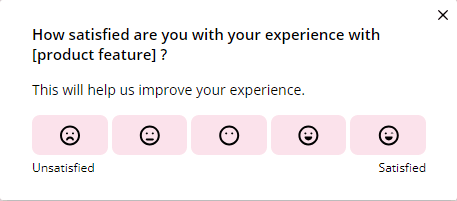
- CES surveys. Customer effort score surveys track the perceived effort in completing a task (e.g., engaging with a feature to extract value from the product). Companies can use insights from CES surveys to uncover friction points in their product.
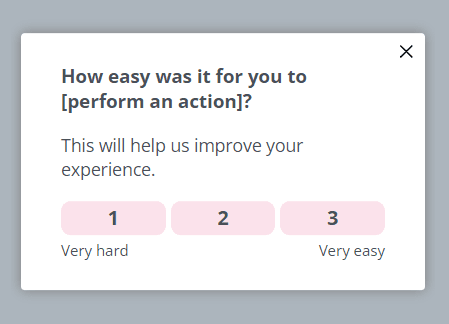
3. Online reviews
93% of customers say online reviews influenced their buying decisions, which makes it a crucial part of building trust and acquiring users. Third-party reviews are a form of customer feedback found on third-party platforms like G2, Capterra, and GetApp.
While first-party feedback displayed on your own site can increase conversions through social proof, third-party reviews feel more authentic and credible.
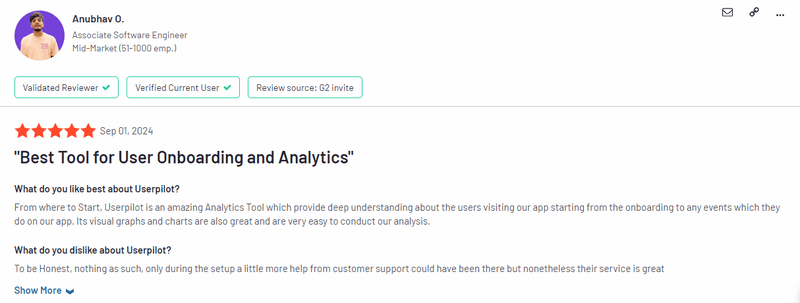
Pro tip: Userpilot can help you drive word-of-mouth marketing by letting you segment users with high NPS scores and then prompting them to leave third-party reviews.
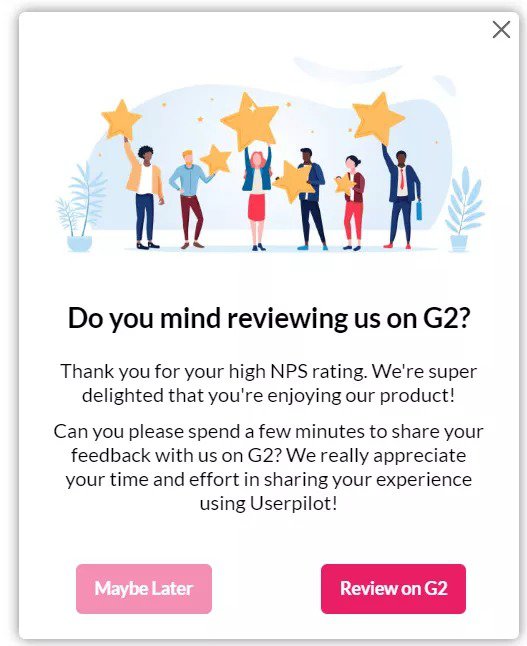
4. Customer support interactions
SaaS customer support — which is often provided in the form of in-app help like resource centers and live chat — provides a wealth of data on customer interactions with your product or representatives. Tagging support tickets and bug reports can help you identify recurring problems that users are facing.
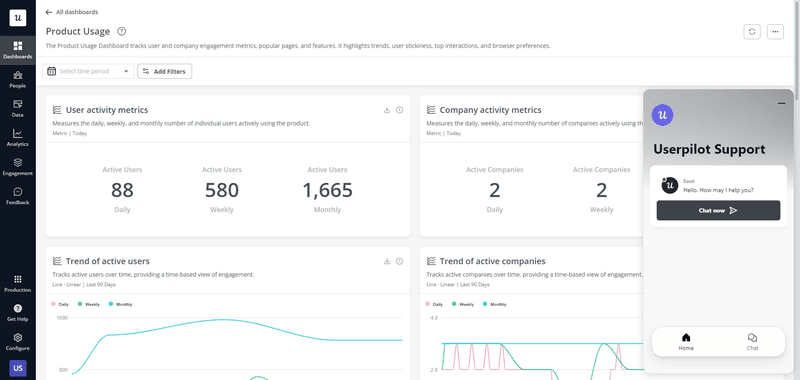
5. Customer interviews
In-app surveys are the most efficient way of collecting customer feedback at scale, but when trying to extract deeper customer insights, 1-on-1 interviews are a necessary leap you’ll need to take. There are quite a few open-ended questions you can ask during customer interviews, such as:
- How did you discover our product?
- What do you think of our product?
- How can we improve our product?
- What would make you stop using our product?
- What would you change if you were in charge of our product?
Open-ended questions — which usually start with how, what, or why — prompt customers to elaborate on their thoughts instead of providing single-world responses. Userpilot’s no-code modals can be used to incentivize customers to book an interview in exchange for a product discount or third-party voucher.
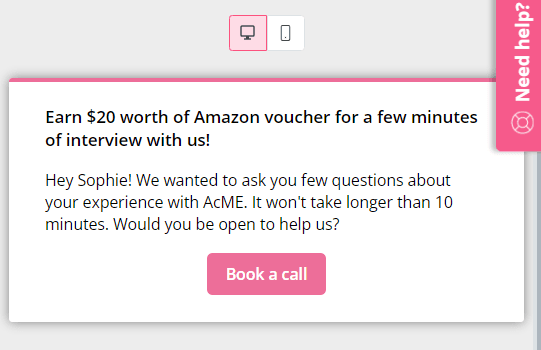
6. Social media
A customer feedback loop is the cycle of collecting feedback and then acting on it to solve pain points and make the product more valuable. If you want to cast a wider net when creating a feedback loop, you’ll need to venture beyond user feedback surveys and scour social media channels.
While this used to be a manual process of joining Facebook groups and perusing Reddit threads, it’s now possible to automate the process of “listening” for social mentions. Tools like Google Alerts, Brand24, and Mention notify you when potential customers mention a keyword you’re tracking.
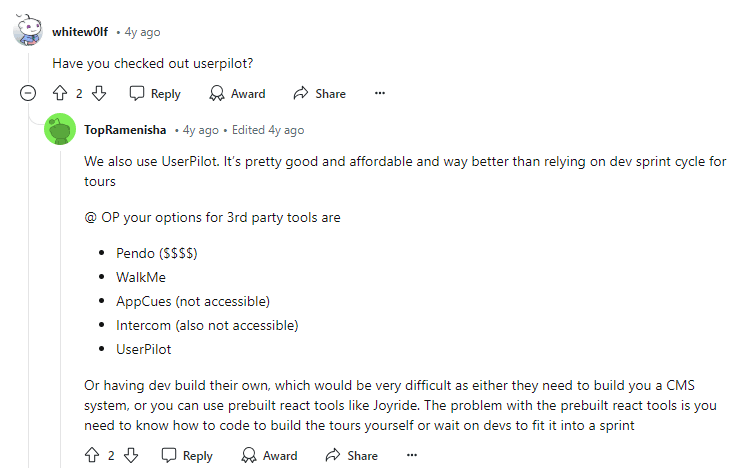
7. Feature requests
Finally, taking (and implementing) feature requests is an inevitable part of the product development process. These help you introduce new features that people actually want and address shortcomings or bugs in existing features.
Userpilot even lets you trigger feature surveys that prompt customers to make a request!
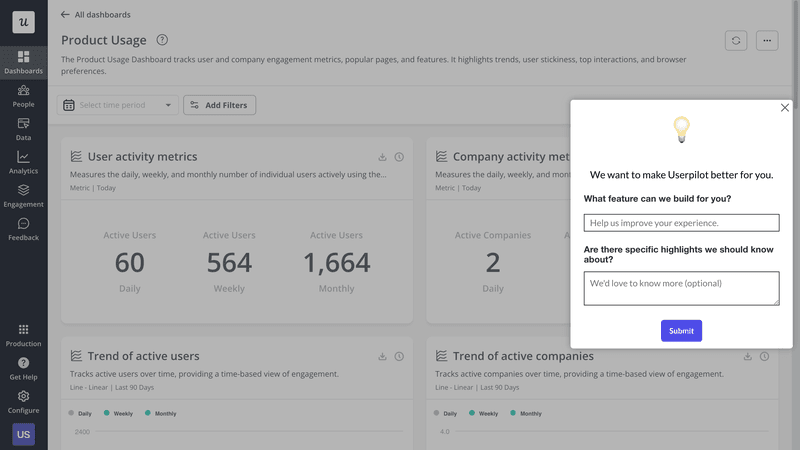
10 customer feedback examples from other companies
Now that you’re familiar with the 7 types of customer feedback, let’s look at some customer feedback examples from successful SaaS companies. The goal isn’t to copy everything but rather to optimize your customer feedback strategy using the takeaways gathered from these examples.
1. Slack in-app user feedback example
Instead of emailing customers to leave feedback, Slack uses a microsurvey to gather in-app feedback and track user satisfaction. The survey is a multiple-choice question to save users the stress of coming up with specific answers by instead providing statements they may resonate with.
In addition, Slack uses conversational language instead of industry jargon, making it easier for users to understand the questions asked and provide valuable feedback. As a bonus, there’s also an open-text field at the bottom so users can provide additional app feedback if they want to.
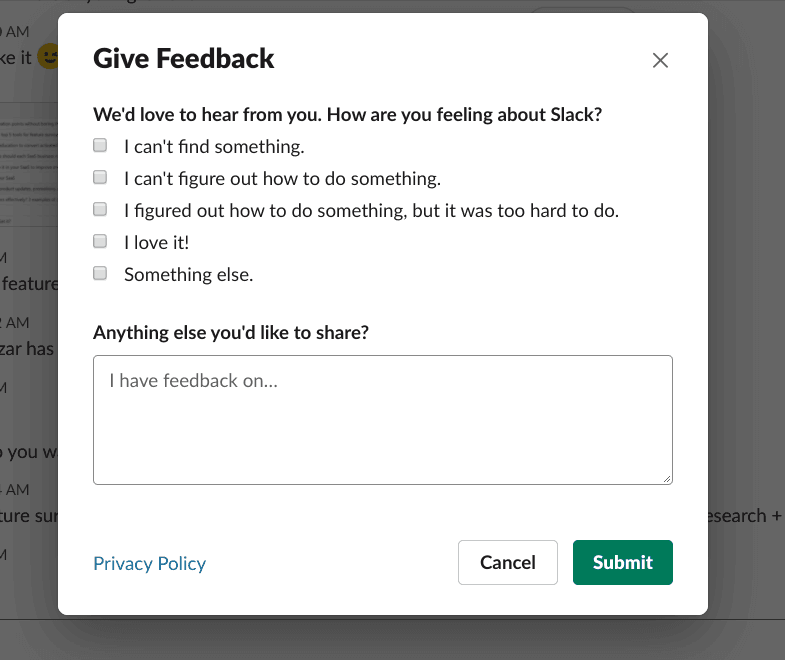
2. Slack’s personalized NPS survey
Slack adds a note right before the numeric scale on its NPS survey. This is a great feedback example because the personalized message comes off as a casual conversation and can encourage the customer to submit feedback.
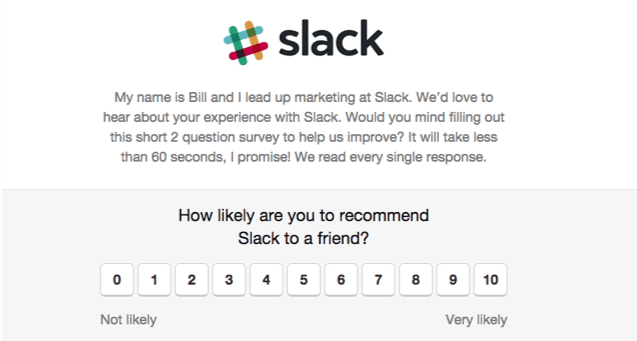
3. Uber real-time two-sided feedback
In the Uber app, ratings go both ways: customers rate drivers and vice versa.
By listening to both sides of every story, Uber can apply feedback that improves the customer experience for drivers and passengers alike — which is crucial for SaaS companies that function as a two-sided marketplace.
Another great thing about this customer satisfaction survey example is that Uber collects feedback in real time. This mitigates the risk of collecting feedback about an experience that’s no longer fresh in the user’s mind and yields more accurate insights as a result.
Uber’s two-sided feedback process keeps both demographics happy and engaged. A satisfied driver will continue driving for the company, while happy customers will continue to book rides and invite friends to use the ridesharing app.
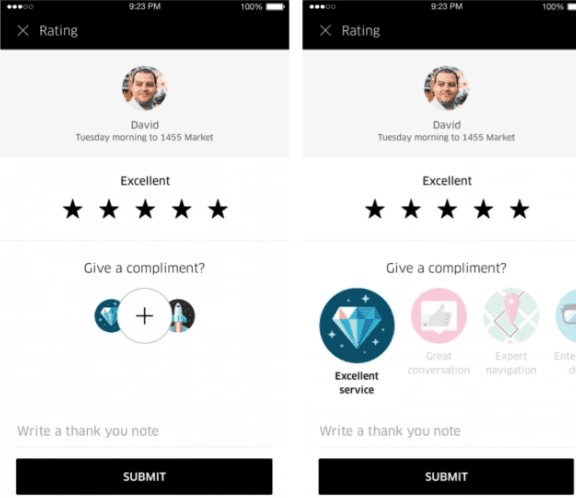
4. Jira’s granular customer feedback example
Jira opts for a feedback widget rather than a pop-up survey to collect user feedback. The presence of a button in the feedback UI allows users to fully enjoy the product experience and then provide feedback whenever they’re ready.
Once a user clicks on the widget, they’ll see a survey customized for the page they were interacting with before tapping the widget. This ensures that the feedback form is relevant to the product experience they had before interacting with the widget.
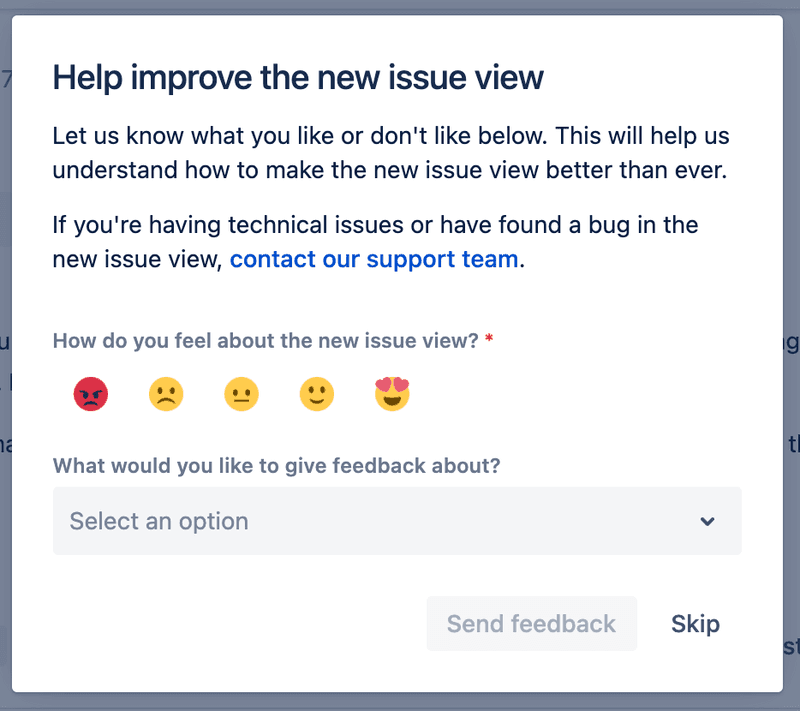
5. Mailchimp’s 3-format feedback survey
Mailchimp triggers a feedback block for users at some point during their user journey in order to collect customer feedback. What makes this feedback example stand out from the rest isn’t the lack of a feedback question but the presence of multiple feedback types for the user to choose from.
Based on the options presented, users can decide if they’d rather leave feedback about a specific page or their overall experience with the website. Giving users more freedom of choice can lead to higher response rates and more valuable insights as they’re able to provide feedback on their own terms.
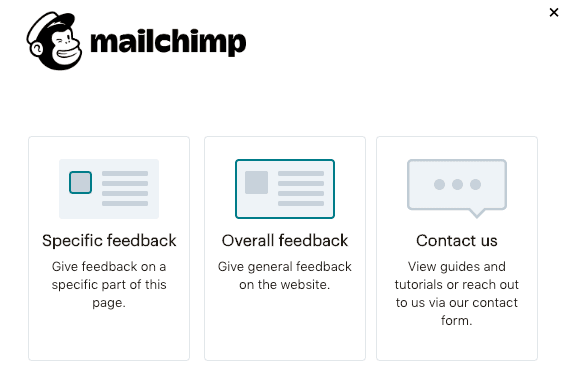
6. Jira notification customer feedback example
Jira’s in-app notification strategy is another prime example of how to collect feedback without being intrusive. Most products notify users about feature usage and task completion, whereas Jira embeds a quick feedback question in the notification so users can rate their experience with the feature they just used.
This type of customer feedback collection is timely, which increases the odds of users responding. That said, this only works if the feedback question is contextual (i.e., related to the notification they saw and the feature they engaged with).
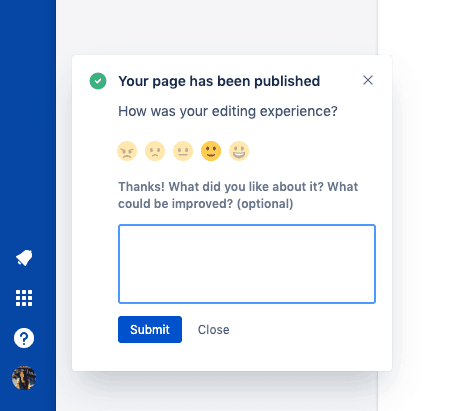
7. Amazon’s customer service feedback survey
Amazon’s customer service feedback survey is used to find out if a customer is satisfied after an interaction with a representative from the customer service department.
Like Slack, Amazon also has an open-text field for users to provide additional feedback– if they wish to do so. This is an excellent example of customer feedback because it helps support managers understand what they need to do to improve customer service.
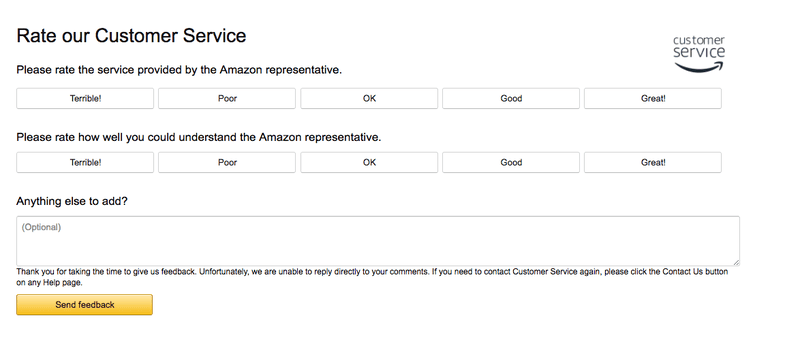
8. Figma’s beta feature testing open-ended customer feedback
Figma used its in-app messaging modal to kill three birds with one stone:
- Notify users of a potential feature.
- Invite users to become testers.
- Request feedback.
Using this in-app messaging approach will trigger curiosity in users, which will lead them to try the new feature and thus make them more qualified to give feedback afterward. Another reason this customer feedback example works is that Figma makes the user a part of their feature development process.
When users feel like they’re a part of your process, they’re more likely to contribute when surveyed, invited to interviews, etc. The more users you deploy as testers, the easier it will be to beta-test new product functionality as it comes out.
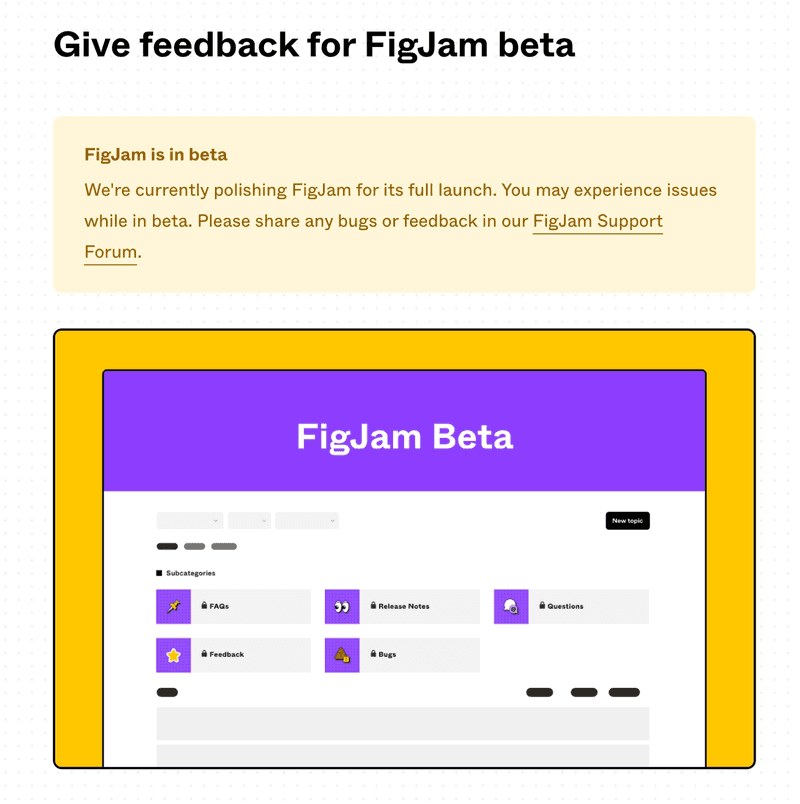
9. Asana’s churn-reducing exit feedback survey example
Customer churn is inevitable, which means the best you can do is to frame it as a learning experience to reduce churn moving forward. Asana’s churn survey gives product managers a medium to collect insights and better understand why users leave.
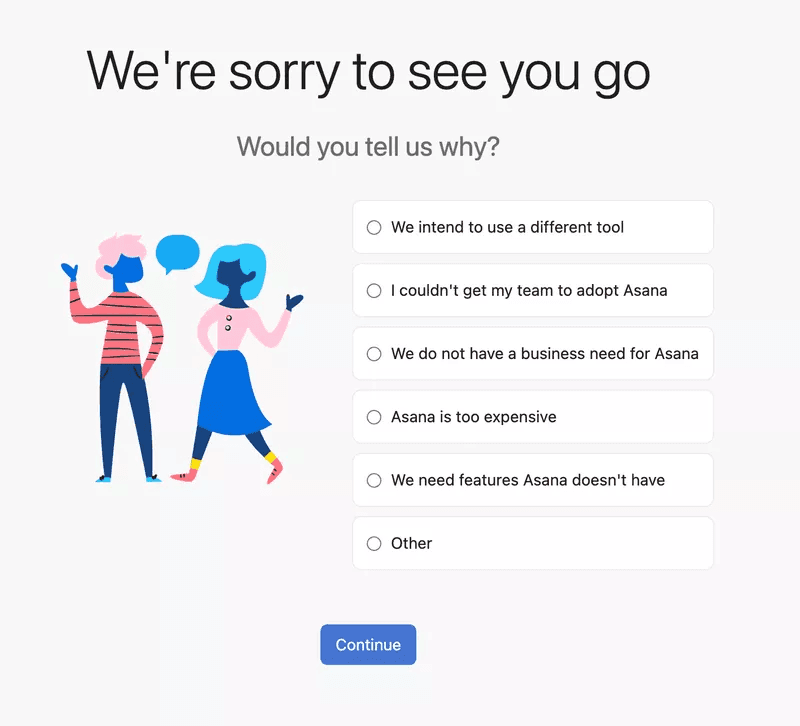
Apart from understanding why users churn, this feedback approach gives you a chance to offer alternatives to users who are about to churn. If a user indicates that they’re leaving because your product is too expensive, you could immediately offer a discount that encourages them to stay.
This serves as a ”last chance” option that will prevent churn instead of relying on win-back campaigns.
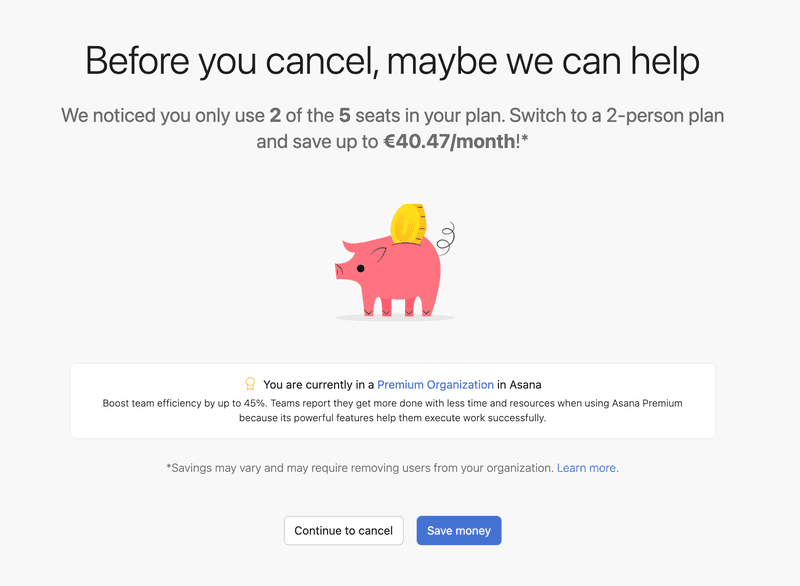
10. Ahrefs asking Reddit for feedback
Since Ahrefs CMO Tim Soulo joined the company in 2015, he has been leveraging Reddit in his customer feedback strategy. This empowers him to proactively collect direct feedback from users on the channels they congregate rather than relying exclusively on in-app responses from customers.

How can Userpilot help you collect customer feedback?
With a great product feedback tool, you can:
- Gather user feedback faster.
- Quantify and analyze responses.
- Apply those insights to enhance customers’ purchasing experience or entire user journey.
As a customer feedback tool, Userpilot is an all-rounder.
There are many ways Userpilot helps companies like yours to collect valuable customer feedback efficiently and at scale. First, you can use the advanced segmentation feature to create various user segments according to user in-app behavior or survey responses.
Then, set behavioral triggers to push contextual microsurveys for specific user segments based on feature usage. After they engage with a particular feature, the in-app survey is immediately triggered, prompting them to provide detailed insight instantly.
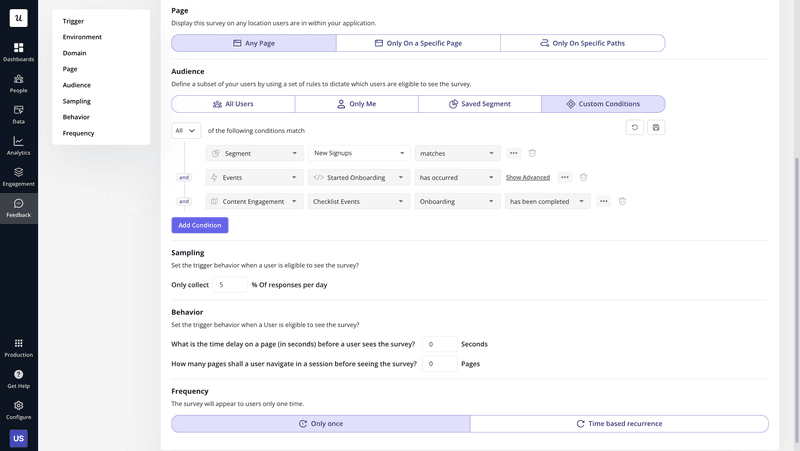
As for survey design, Userpilot offers customization options that allow you to tailor your survey design to be consistent with your branding. It also offers 14 predesigned templates to help you roll out surveys faster for multiple use cases.
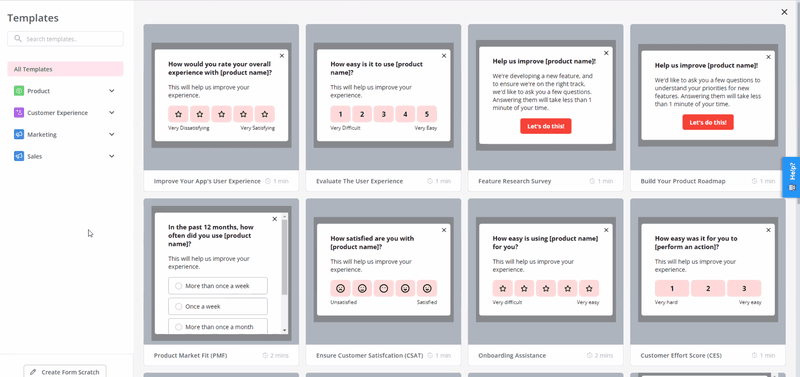
With Userpilot, you can also collect NPS data and tag survey responses to uncover patterns and analyze feedback.
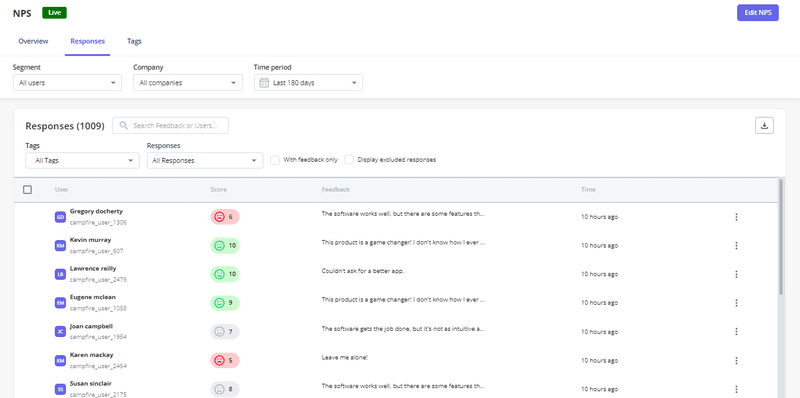
Finally, our survey analytics allow you to visualize data using our dashboards and sort by segment, company, or time period to hone in on the most relevant insights.
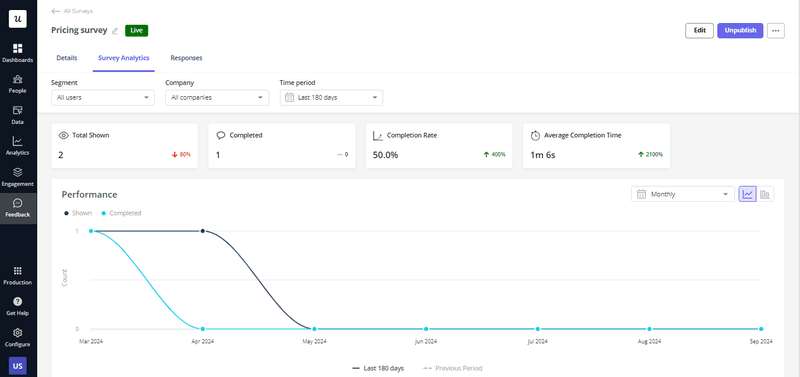
Conclusion
Now that you’ve seen the 7 types of customer feedback and learned from 10 examples from leading SaaS products, it’s time for you to start extracting these insights for yourself. Whether it’s surveys, interviews, or social listening, there’s no better time to start than the present.
Ultimately, customer feedback strategies thrive when best practices are combined with the right tool stack. If you want to build in-app surveys without writing any code and analyze customer feedback using our intuitive dashboards, get your free Userpilot demo today!
FAQs
What is customer feedback?
Customer feedback refers to all quantitative and qualitative information collected from a customer that details their experience with your brand, product, or service.
Why is customer feedback important?
Collecting customer feedback is essential because it:
- Helps companies make informed decisions.
- Allows you to adjust your marketing efforts and attract new customers.
- Increases customer engagement and loyalty.
- Uncovers opportunities for product enhancements.
- Ultimately leads to better customer experience and higher customer retention rates.
What are 5-star positive reviews examples?
Positive reviews help spread word-of-mouth for SaaS companies. Examples could be organizations boasting about increased productivity, marketers testifying about improved metrics, or industry experts recommending that others try the product.







